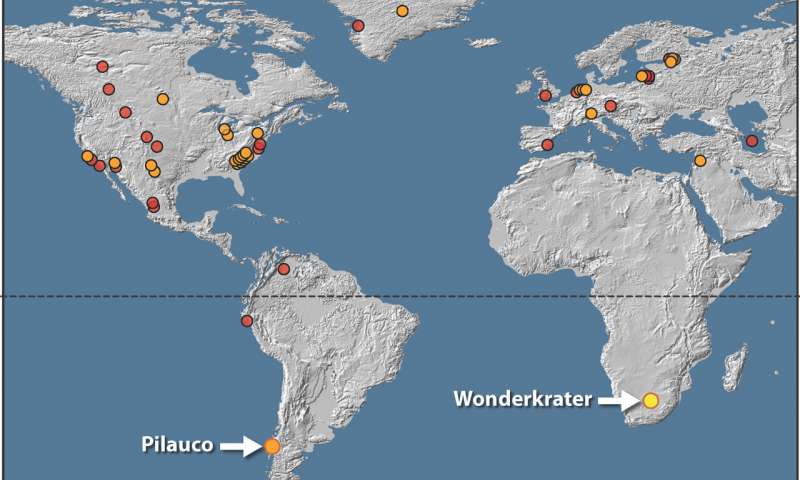William sent in this link to https://phys.org/news/2019-10-hypothesis-asteroid-contributed-mass-extin… … another discovery on the Younger Dryas impact theory. This time at Wunderdratar in the Limpopo province of South Africa. The research was published in Palaeontoliga Africanus by a team led by the University of Witwatersrand's Francis Thackeray. What they found was a platinum spike north of Pretoria. The evidence comes from a core drilled in a peat deposit, within a sample dated 12,800 years ago. No mention of a black mat but appears to represent fall-out of some description from an imact somewhere on the planet – or of course a series of atmospheric explosions as envisaged by Bill Napier. Meteorites are rich in platinum and the finding may support the controversial Younger Dryas Boundary event hypothesis. Many mammals became extinct at this time and this includes a giant African buffalo, a huge zebra and a very big Wildebeest. Human populations also seem to have been affected as the Robberg stone artifact industry appears to have terminated. This may be compared to the end of Clovis in North America.
The team also have evidence from pollen analysis to show that at the YD boundary, 12,800 years ago, there was a temporary cooling – confirming the Younger Dryas episode (known mostly from a cooling climate in the northern hemisphere). The fact it also exists in South Africa (and South America) seems to show it was a global phenomenon …
 … to add a dollop of alarmism to the story Phys.Org end by quoting the Thackeray as saying that asteroid (or defunct comet) Apophis 99942 is due to pass close to Earth in 10 years time. You can download the full article if you go to https://cosmictusk.com/africa/
… to add a dollop of alarmism to the story Phys.Org end by quoting the Thackeray as saying that asteroid (or defunct comet) Apophis 99942 is due to pass close to Earth in 10 years time. You can download the full article if you go to https://cosmictusk.com/africa/
